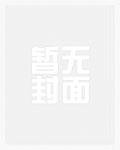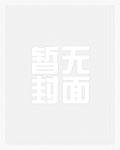搜索"things past"找到的小说 (P1)
《Missing Things》 / 张陌南 / 原创小说
没有简介
张陌南
原创小说 - 现代 - BL - 短篇
完结
食用BGM:Missing Things-Kyson
《Not A Bad Thing》 / 森森 / 同人衍生
有缘千里来相会
森森
明星[明星] - 珍嘉[朴珍荣/王嘉尔] 同人衍生 - 短篇 - 完结 - BL - 真人同人
《Sex Type Thing(H)》 / 明月心 / 耽美
sm 高h he真的是一篇超级经典的文啊大大退出耽美界真是可惜了这篇文的主角是千叶苍,千叶家年轻的家主。文中对他的评价:shen材很高,四肢修长,略长的黑se短发,总ti感觉很平淡。可文中的苍却有着惊人的意志力,文中的叙述很平淡,却让我动容。
《Sex Type Thing(H)》 / 明月心 / 耽美
sm 高h he真的是一篇超级经典的文啊大大退出耽美界真是可惜了这篇文的主角是千叶苍,千叶家年轻的家主。文中对他的评价:shen材很高,四肢修长,略长的黑se短发,总ti感觉很平淡。可文中的苍却有着惊人的意志力,文中的叙述很平淡,却让我动容。
《Sex Type Thing(H)》 / 明月心 / 耽美
sm 高h he真的是一篇超级经典的文啊大大退出耽美界真是可惜了这篇文的主角是千叶苍,千叶家年轻的家主。文中对他的评价:shen材很高,四肢修长,略长的黑se短发,总ti感觉很平淡。可文中的苍却有着惊人的意志力,文中的叙述很平淡,却让我动容。
《Sex Type Thing(H)》 / 明月心 / 耽美
sm 高h he真的是一篇超级经典的文啊大大退出耽美界真是可惜了这篇文的主角是千叶苍,千叶家年轻的家主。文中对他的评价:shen材很高,四肢修长,略长的黑se短发,总ti感觉很平淡。可文中的苍却有着惊人的意志力,文中的叙述很平淡,却让我动容。
《Beautiful Things》 / 姚夜辰 / 原创小说
直男时装编辑攻/淡泊明星受/HE/甜
姚夜辰
原创小说 - BL - 短篇 - 完结
现代 - HE - 小甜饼 - 日常
因缘邂逅
2017年冬,东京,表参道。
女性时装杂志社唯一的直男编辑,在街拍采访时偶遇一名淡然又情绪稳定的高颜值男子。
随着接触,他才知道对方竟然是出名的GV顶流明星。
直男编辑既好奇又尴尬,闹出了不少笑话。
而GV-Star情绪稳定的面具下,其实藏着一颗敏感脆弱的心。
《Beautiful Things》 / 姚夜辰 / 原创小说
直男时装编辑攻/淡泊明星受/HE/甜
姚夜辰
原创小说 - BL - 短篇 - 完结
现代 - HE - 小甜饼 - 日常
因缘邂逅
2017年冬,东京,表参道。
女性时装杂志社唯一的直男编辑,在街拍采访时偶遇一名淡然又情绪稳定的高颜值男子。
随着接触,他才知道对方竟然是出名的GV顶流明星。
直男编辑既好奇又尴尬,闹出了不少笑话。
而GV-Star情绪稳定的面具下,其实藏着一颗敏感脆弱的心。
《The Bonesetter's Daughter》 / 谭恩美 / 英文
At the beginning of Amy Tan's fourth novel, two packets of papers written in Chinese calligraphy fall into the hands of Ruth Young. One bundle is titled Things I Know Are True and the other, Things I Must Not Forget. The author? That would be the protagonist's mother, LuLing, who has been diagnosed with Alzheimer's disease. In these documents the elderly matriarch, born in China in 1916, has set down a record of her birth and family history, determined to keep the facts from vanishing as her mind deteriorates.A San Francisco career woman who makes her living by ghostwriting self-help books, Ruth has little idea of her mother's past or true identity. What's more, their relationship has tended to be an angry one. Still, Ruth recognizes the onset of LuLing's decline--along with her own remorse over past rancor--and hires a translator to decipher the packets. She also resolves to ask her mother to tell her about her life. For once, she would ask. She would listen. She would sit down and not be in a hurry or have anything else to do.Framed at either end by Ruth's chapters, the central portion of The Bonesetter's Daughter takes place in China in the remote, mountainous region where anthropologists discovered Peking Man in the 1920s. Here superstition and tradition rule over a succession of tiny villages. And here LuLing grows up under the watchful eye of her hideously scarred nursemaid, Precious Auntie. As she makes clear, it's not an enviable setting:I noticed the ripe stench of a pig pasture, the pockmarked land dug up by dragon-bone dream-seekers, the holes in the walls, the mud by the wells, the dustiness of the unpaved roads. I saw how all the women we passed, young and old, had the same bland face, sleepy eyes that were mirrors of their sleepy minds.Nor is rural isolation the worst of it. LuLing's family, a clan of ink makers, believes itself cursed by its connection to a local doctor, who cooks up his potions and remedies from human bones. And indeed, a great deal of bad luck befalls the narrator and her sister GaoLing before they can finally engineer their escape from China. Along the way, familial squabbles erupt around every corner, particularly among mothers, daughters, and sisters. And as she did in her earlier The Joy Luck Club, Amy Tan uses these conflicts to explore the intricate dynamic that exists between first-generation Americans and their immigrant elders. --Victoria Jenkins
《The Bonesetter's Daughter》 / 谭恩美 / 英文
At the beginning of Amy Tan's fourth novel, two packets of papers written in Chinese calligraphy fall into the hands of Ruth Young. One bundle is titled Things I Know Are True and the other, Things I Must Not Forget. The author? That would be the protagonist's mother, LuLing, who has been diagnosed with Alzheimer's disease. In these documents the elderly matriarch, born in China in 1916, has set down a record of her birth and family history, determined to keep the facts from vanishing as her mind deteriorates.A San Francisco career woman who makes her living by ghostwriting self-help books, Ruth has little idea of her mother's past or true identity. What's more, their relationship has tended to be an angry one. Still, Ruth recognizes the onset of LuLing's decline--along with her own remorse over past rancor--and hires a translator to decipher the packets. She also resolves to ask her mother to tell her about her life. For once, she would ask. She would listen. She would sit down and not be in a hurry or have anything else to do.Framed at either end by Ruth's chapters, the central portion of The Bonesetter's Daughter takes place in China in the remote, mountainous region where anthropologists discovered Peking Man in the 1920s. Here superstition and tradition rule over a succession of tiny villages. And here LuLing grows up under the watchful eye of her hideously scarred nursemaid, Precious Auntie. As she makes clear, it's not an enviable setting:I noticed the ripe stench of a pig pasture, the pockmarked land dug up by dragon-bone dream-seekers, the holes in the walls, the mud by the wells, the dustiness of the unpaved roads. I saw how all the women we passed, young and old, had the same bland face, sleepy eyes that were mirrors of their sleepy minds.Nor is rural isolation the worst of it. LuLing's family, a clan of ink makers, believes itself cursed by its connection to a local doctor, who cooks up his potions and remedies from human bones. And indeed, a great deal of bad luck befalls the narrator and her sister GaoLing before they can finally engineer their escape from China. Along the way, familial squabbles erupt around every corner, particularly among mothers, daughters, and sisters. And as she did in her earlier The Joy Luck Club, Amy Tan uses these conflicts to explore the intricate dynamic that exists between first-generation Americans and their immigrant elders. --Victoria Jenkins
《The Bonesetter's Daughter》 / 谭恩美 / 英文
At the beginning of Amy Tan's fourth novel, two packets of papers written in Chinese calligraphy fall into the hands of Ruth Young. One bundle is titled Things I Know Are True and the other, Things I Must Not Forget. The author? That would be the protagonist's mother, LuLing, who has been diagnosed with Alzheimer's disease. In these documents the elderly matriarch, born in China in 1916, has set down a record of her birth and family history, determined to keep the facts from vanishing as her mind deteriorates.A San Francisco career woman who makes her living by ghostwriting self-help books, Ruth has little idea of her mother's past or true identity. What's more, their relationship has tended to be an angry one. Still, Ruth recognizes the onset of LuLing's decline--along with her own remorse over past rancor--and hires a translator to decipher the packets. She also resolves to ask her mother to tell her about her life. For once, she would ask. She would listen. She would sit down and not be in a hurry or have anything else to do.Framed at either end by Ruth's chapters, the central portion of The Bonesetter's Daughter takes place in China in the remote, mountainous region where anthropologists discovered Peking Man in the 1920s. Here superstition and tradition rule over a succession of tiny villages. And here LuLing grows up under the watchful eye of her hideously scarred nursemaid, Precious Auntie. As she makes clear, it's not an enviable setting:I noticed the ripe stench of a pig pasture, the pockmarked land dug up by dragon-bone dream-seekers, the holes in the walls, the mud by the wells, the dustiness of the unpaved roads. I saw how all the women we passed, young and old, had the same bland face, sleepy eyes that were mirrors of their sleepy minds.Nor is rural isolation the worst of it. LuLing's family, a clan of ink makers, believes itself cursed by its connection to a local doctor, who cooks up his potions and remedies from human bones. And indeed, a great deal of bad luck befalls the narrator and her sister GaoLing before they can finally engineer their escape from China. Along the way, familial squabbles erupt around every corner, particularly among mothers, daughters, and sisters. And as she did in her earlier The Joy Luck Club, Amy Tan uses these conflicts to explore the intricate dynamic that exists between first-generation Americans and their immigrant elders. --Victoria Jenkins
《The Bonesetter's Daughter》 / 谭恩美 / 英文
At the beginning of Amy Tan's fourth novel, two packets of papers written in Chinese calligraphy fall into the hands of Ruth Young. One bundle is titled Things I Know Are True and the other, Things I Must Not Forget. The author? That would be the protagonist's mother, LuLing, who has been diagnosed with Alzheimer's disease. In these documents the elderly matriarch, born in China in 1916, has set down a record of her birth and family history, determined to keep the facts from vanishing as her mind deteriorates.A San Francisco career woman who makes her living by ghostwriting self-help books, Ruth has little idea of her mother's past or true identity. What's more, their relationship has tended to be an angry one. Still, Ruth recognizes the onset of LuLing's decline--along with her own remorse over past rancor--and hires a translator to decipher the packets. She also resolves to ask her mother to tell her about her life. For once, she would ask. She would listen. She would sit down and not be in a hurry or have anything else to do.Framed at either end by Ruth's chapters, the central portion of The Bonesetter's Daughter takes place in China in the remote, mountainous region where anthropologists discovered Peking Man in the 1920s. Here superstition and tradition rule over a succession of tiny villages. And here LuLing grows up under the watchful eye of her hideously scarred nursemaid, Precious Auntie. As she makes clear, it's not an enviable setting:I noticed the ripe stench of a pig pasture, the pockmarked land dug up by dragon-bone dream-seekers, the holes in the walls, the mud by the wells, the dustiness of the unpaved roads. I saw how all the women we passed, young and old, had the same bland face, sleepy eyes that were mirrors of their sleepy minds.Nor is rural isolation the worst of it. LuLing's family, a clan of ink makers, believes itself cursed by its connection to a local doctor, who cooks up his potions and remedies from human bones. And indeed, a great deal of bad luck befalls the narrator and her sister GaoLing before they can finally engineer their escape from China. Along the way, familial squabbles erupt around every corner, particularly among mothers, daughters, and sisters. And as she did in her earlier The Joy Luck Club, Amy Tan uses these conflicts to explore the intricate dynamic that exists between first-generation Americans and their immigrant elders. --Victoria Jenkins
(第1/4页)
推荐阅读



